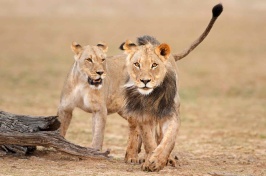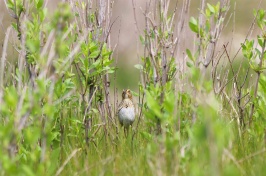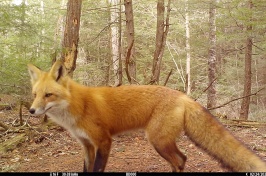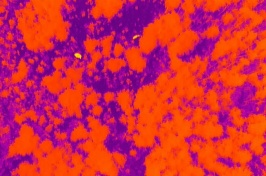Wildlife
Snow Depth a Key Factor in Regional Fox Populations
Discover how snow depth influences red fox populations in northern New England. UNH research reveals climate's pivotal role over prey availability and competition. Read More-
02/02/24
How Can We Increase the Success of Lion Conservation Plans?
New UNH-supported research explores strategies for lion conservation, focusing on ecological and sociopolitical factors to protect vulnerable African... -
11/28/23
Conservation Planning Through Genetic Monitoring
Explore UNH's groundbreaking study on conserving the endangered saltmarsh sparrow through genetic monitoring, highlighting key strategies against... -
08/28/23
UNH Study Examines How Granite State Mammals Adapt to Exurbanization
NHAES studies Granite State mammals' behavioral responses as urbanites move to rural areas, altering housing density and habitats. -
02/16/23
Tracking New Hampshire’s Moose Population Using Drones and Wildlife Cameras
New research led by New Hampshire Agricultural Experiment Station scientist Remington Moll assessed how emerging technologies may help improve...
Recent Stories
-
12/19/22 - UNH Researcher Examines Abundance Factors of Striped Skunk Across Contiguous United StatesNew research from the New Hampshire Agricultural Experiment Station examines factors that affect skunk abundance in the region and across the United States, underscoring the... Read More
-
08/09/22 - Cohabitating with New England CottontailsNew research by the NHAES researchers finds that habitat restoration efforts for the at-risk New England cottontail will also benefit a number of shrubland-obligate birds. Read More
-
05/20/22 - Forest ImpactsWhat impact do nonnative pests and diseases have on the vegetation of the Northern Forest? How will climate change impact the range of the northern red oak, especially within the... Read More
-
06/03/21 - Black Bear, ProtectorBlack bears may shield smaller carnivores, including the gray fox, from predators such as coyotes, new UNH research finds. Read More
-
09/14/18 - A Population At RiskNorthern New Hampshire and western Maine are seeing an increase in winter ticks, which are endangering the moose population. Read More
-
03/01/18 - Tracking MoosePete Pekins is leading a study on the dwindling moose population and the rise of the winter tick. Read More
-
08/30/16 - Popular PollinatorsThe buzz about New Hampshire’s bee population isn’t all bad. This spring, assistant professor of biological sciences Sandra Rehan and USDA research fellow Erika Tucker released... Read More
-
05/03/16 - UNH Research Reveals Water Temperature Influences Horseshoe Crab SpawningNew research from the University of New Hampshire finds that Atlantic horseshoe crabs in New Hampshire’s Great Bay Estuary time their annual spawning based on water temperature,... Read More
-
12/17/15 - Four Undergrads Receive Study Abroad ScholarshipsHannah Medovnikov '17 is one of four UNH students to have received a Benjamin A. Gilman International Scholarship for spring semester study abroad. Medovnikov will travel to... Read More
-
12/08/15 - Not Just the Heat, It’s the HumansWhen it comes to adapting to the changing environment of the Great Basin in the North American West, for small mammals, warming associated with climate change is only part of the... Read More


































































